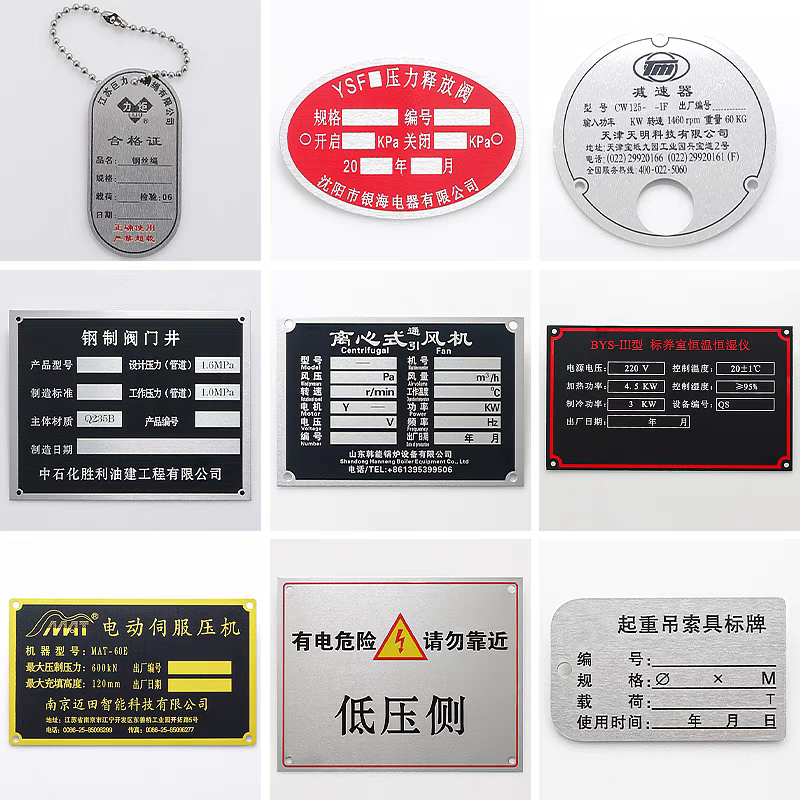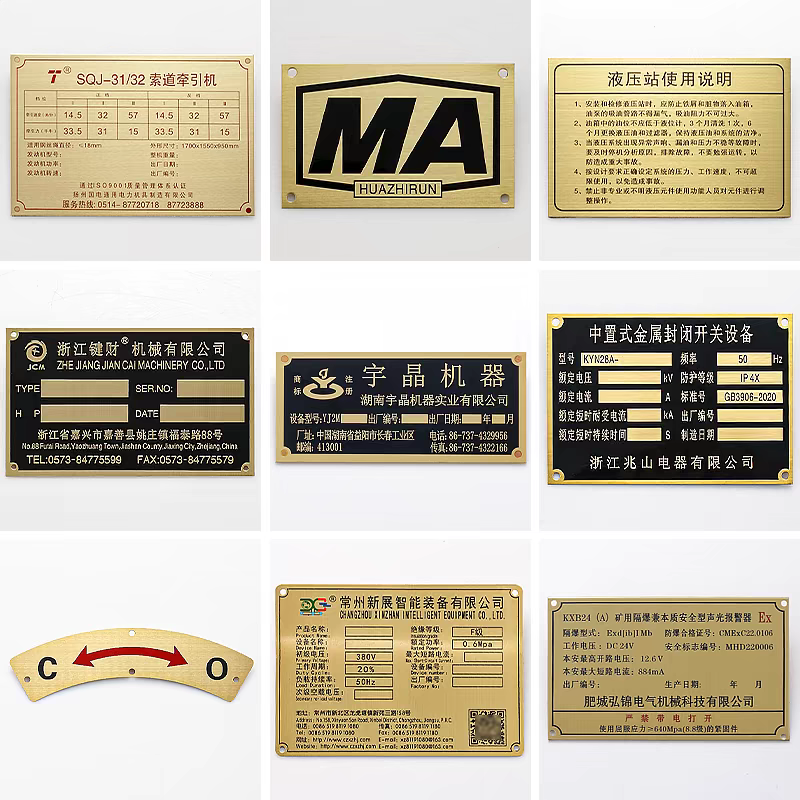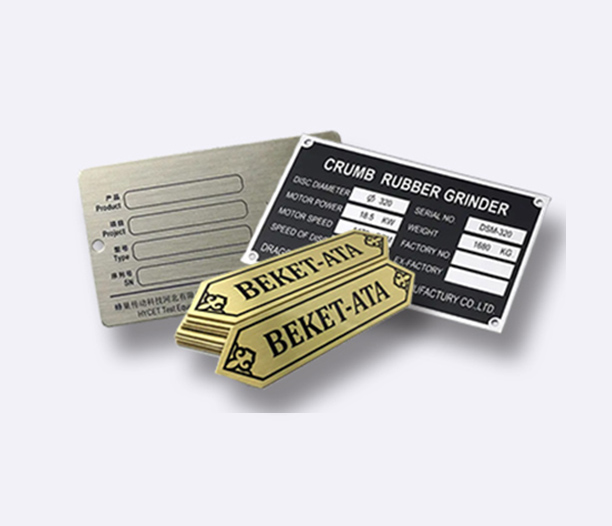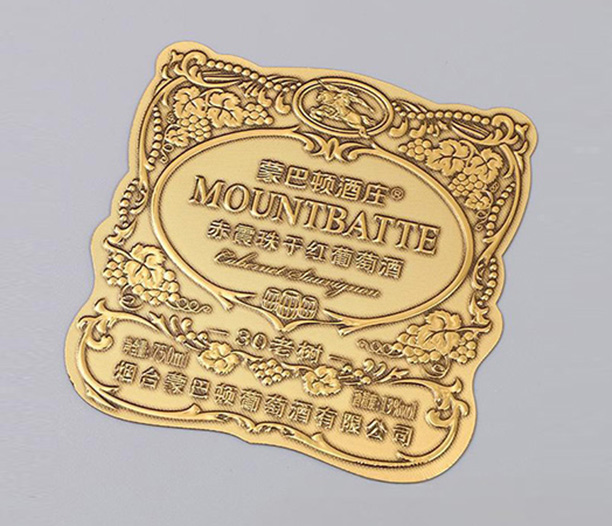Fire safety is a critical aspect of both residential and commercial environments, and fire extinguishers play a pivotal role in preventing small fires from escalating into devastating disasters. However, many people overlook the importance of fire extinguisher labeling, which serves as the primary guide for selecting and using the right extinguisher in an emergency. Proper fire extinguisher labeling ensures that users can quickly identify the type of fire the extinguisher is designed to combat, understand its operational instructions, and comply with safety regulations. In this article, we will delve into the intricacies of fire extinguisher labeling, covering its key components, types, importance, common problems, and regulatory standards. By the end, you will have a comprehensive understanding of how fire extinguisher labeling contributes to overall safety and what pitfalls to avoid.

What is Fire Extinguisher Labeling?
Fire extinguisher labeling refers to the system of symbols, text, colors, and codes displayed on a fire extinguisher to convey essential information about its use, classification, and maintenance. This labeling is not arbitrary; it follows standardized guidelines to ensure consistency and clarity across different regions and manufacturers. The primary purpose of fire extinguisher labeling is to enable users—whether trained professionals or ordinary individuals—to make informed decisions during high-stress situations, such as a fire outbreak. For instance, labels indicate the class of fire the extinguisher can handle (e.g., Class A for ordinary combustibles like wood, or Class B for flammable liquids), the type of extinguishing agent (e.g., water, foam, or CO2), and step-by-step instructions for operation. Additionally, fire extinguisher labeling includes details about the manufacturer, model, and safety certifications, which are crucial for compliance and accountability. Without effective fire extinguisher labeling, the risk of using an inappropriate extinguisher increases, potentially leading to ineffective fire suppression or even exacerbating the hazard. Thus, understanding fire extinguisher labeling is the first step toward enhancing fire preparedness and response.
Key Components of a Fire Extinguisher Label
A well-designed fire extinguisher label contains several critical elements that work together to provide a clear and concise safety message. Here are the main components typically found in fire extinguisher labeling:
Classification Symbols and Letters: This part of the fire extinguisher labeling uses letters (A, B, C, D, or K) and pictorial symbols to denote the classes of fires the extinguisher is suitable for. For example, a Class A symbol might include a graphic of a trash can and wood burning, while Class B shows a gasoline can. This visual aid helps users quickly match the extinguisher to the fire type, reducing confusion during emergencies.
Operating Instructions: Fire extinguisher labeling always includes simple, step-by-step directions for use, often accompanied by diagrams. Common instructions involve pulling a pin, aiming the nozzle, squeezing the handle, and sweeping the base of the fire. This section is vital for untrained users, as it guides them through the process without requiring prior experience.
Extinguisher Agent and Capacity: The label specifies the type of agent inside (e.g., dry chemical, CO2, or water) and its capacity, usually measured in pounds or kilograms. This information is part of fire extinguisher labeling that helps users understand the extinguisher's capabilities and limitations, such as the range and duration of discharge.
Safety Warnings and Precautions: Fire extinguisher labeling often includes warnings about potential hazards, such as electrical risks or the importance of maintaining a safe distance. These cautions are designed to prevent accidents during use and emphasize the need for proper training.
Manufacturer Details and Certification Marks: Labels display the manufacturer's name, model number, and certification from organizations like UL (Underwriters Laboratories) or FM (Factory Mutual). This aspect of fire extinguisher labeling ensures that the product meets industry standards and facilitates recalls or maintenance checks.
Inspection and Maintenance Tags: While not part of the permanent label, many extinguishers have additional tags for recording monthly inspections and annual maintenance. This complements the core fire extinguisher labeling by providing a history of upkeep, which is essential for compliance with safety regulations.
Overall, these components make fire extinguisher labeling a comprehensive tool for safety, but they must be legible and up-to-date to be effective. Over time, labels can fade or become damaged, highlighting the need for regular checks—a topic we'll explore later in common issues.
Types of Fire Extinguishers and Their Labeling Systems
Fire extinguisher labeling varies significantly based on the type of extinguisher, as each is designed for specific fire classes. Understanding these variations is crucial for selecting the right device and interpreting the labels correctly. Here’s a breakdown of the main types and their associated fire extinguisher labeling:
Water and Foam Extinguishers (Class A): These are intended for ordinary combustibles like paper, wood, and textiles. The fire extinguisher labeling for these units typically features a green symbol or background with a Class A rating. Labels might also include warnings against using them on electrical or flammable liquid fires, as water can conduct electricity or spread such fires.
CO2 Extinguishers (Class B and C): Carbon dioxide extinguishers are used for flammable liquids and electrical fires. Their fire extinguisher labeling often includes a black symbol or text indicating suitability for Class B and C fires, along with instructions to avoid skin contact with the discharge horn due to extreme cold.
Dry Chemical Extinguishers (Class A, B, C): These are versatile and common in many settings. The fire extinguisher labeling on these models usually has a blue or white area with multiple class ratings. For example, a multipurpose dry chemical extinguisher might show A-B-C symbols, indicating it can handle most common fires. Labels also detail the agent type, such as ammonium phosphate, and any residue concerns.
Wet Chemical Extinguishers (Class K): Designed for kitchen fires involving cooking oils and fats, these extinguishers have fire extinguisher labeling that includes a Class K symbol, often in black or yellow. The labels emphasize the safe application method to prevent splashing and include post-use cleanup instructions.
Clean Agent and Halon Extinguishers (Class B and C): These are used in sensitive areas like server rooms due to their non-residue properties. The fire extinguisher labeling here highlights environmental considerations and electrical safety, with symbols for Class B and C fires.
Dry Powder Extinguishers (Class D): For combustible metals, these have fire extinguisher labeling with a yellow symbol and specific warnings about metal fire hazards. Labels often include specialized handling instructions due to the unique nature of these fires.
In each case, the fire extinguisher labeling is tailored to the extinguisher's purpose, ensuring users can quickly identify the correct type. However, inconsistencies in fire extinguisher labeling across brands or regions can lead to confusion—a common problem we'll address later. By familiarizing yourself with these systems, you can enhance your ability to respond effectively in a fire emergency.

Why Fire Extinguisher Labeling is Critical for Safety
The importance of fire extinguisher labeling cannot be overstated, as it directly impacts emergency response outcomes and overall safety compliance. Here are several reasons why fire extinguisher labeling is indispensable:
Rapid Decision-Making in Emergencies: During a fire, every second counts. Clear and intuitive fire extinguisher labeling allows individuals to quickly determine if an extinguisher is appropriate for the fire at hand. For instance, misusing a water-based extinguisher on an electrical fire could result in electrocution, but proper labeling prevents this by clearly indicating the fire classes.
Compliance with Legal and Insurance Requirements: Regulations from organizations like OSHA (Occupational Safety and Health Administration) and NFPA (National Fire Protection Association) mandate specific fire extinguisher labeling standards. Non-compliance can lead to fines, legal liabilities, or voided insurance claims. Thus, accurate fire extinguisher labeling is not just a best practice—it's a legal necessity.
Training and Awareness: Fire extinguisher labeling serves as an educational tool for training programs. By studying labels, employees and residents can learn about fire types and extinguisher use, fostering a culture of safety. Regular drills that incorporate fire extinguisher labeling review can improve confidence and response times.
Prevention of Cross-Contamination and Hazards: In industrial settings, using the wrong extinguisher can exacerbate fires or cause chemical reactions. For example, a Class D fire involving metals requires a specific dry powder extinguisher, and the fire extinguisher labeling ensures that only the correct type is deployed. This minimizes risks to people and property.
Maintenance and Accountability: Fire extinguisher labeling includes information on inspection schedules and maintenance history, which helps facilities managers track the condition of extinguishers. This proactive approach ensures that devices are functional when needed and reduces the likelihood of label degradation affecting safety.
In summary, fire extinguisher labeling is a linchpin of fire safety strategies. It bridges the gap between equipment availability and effective use, making it essential for everyone to understand and respect these labels. Neglecting fire extinguisher labeling can have dire consequences, underscoring the need for ongoing education and vigilance.
Common Problems and Misconceptions in Fire Extinguisher Labeling
Despite its importance, fire extinguisher labeling often faces issues that compromise its effectiveness. Recognizing these common problems can help in addressing them proactively. Here are some frequent challenges and misconceptions related to fire extinguisher labeling:
Faded or Damaged Labels: Over time, exposure to sunlight, moisture, or chemicals can cause fire extinguisher labeling to fade, peel, or become illegible. This is a widespread issue in older extinguishers or those stored in harsh environments. When labels are unreadable, users might guess the extinguisher type, leading to dangerous mistakes. Regular inspections and label replacements are crucial to mitigate this.
Misinterpretation of Symbols and Codes: Many people struggle to understand the symbols and class ratings on fire extinguisher labeling. For example, some may confuse the Class B symbol (for flammable liquids) with Class C (for electrical fires), resulting in inappropriate use. This misconception highlights the need for better public education on fire extinguisher labeling standards.
Inconsistent Labeling Across Regions: Fire extinguisher labeling can vary by country or region due to different regulatory bodies. For instance, European standards (EN) might use slightly different symbols than North American (NFPA) standards. This inconsistency can confuse users in multinational companies or travelers, emphasizing the importance of global harmonization in fire extinguisher labeling.
Overlooking Maintenance Tags: While the primary fire extinguisher labeling focuses on use instructions, auxiliary tags for inspections are often ignored. If these tags are missing or not updated, it can give a false sense of security. Users might assume the extinguisher is functional, even if it hasn't been serviced, leading to failures during emergencies.
Assumptions About Universality: A common misconception is that all fire extinguishers are the same, and fire extinguisher labeling is merely decorative. This leads to casual attitudes toward label checks. In reality, each extinguisher has specific capabilities, and fire extinguisher labeling is the key to unlocking that information.
Language and Literacy Barriers: In diverse workplaces, fire extinguisher labeling that relies solely on text might not be accessible to non-native speakers. This problem can be addressed by using universal symbols, but if labels are overly complex, they still pose a risk. Enhancing fire extinguisher labeling with clear graphics and multilingual support can improve inclusivity.
Addressing these issues requires a combination of regular maintenance, training, and adherence to standards. By being aware of these pitfalls, you can ensure that fire extinguisher labeling remains a reliable safety resource.
How to Read and Interpret Fire Extinguisher Labels
Effectively reading and interpreting fire extinguisher labeling is a skill that can save lives. This section provides a step-by-step guide to understanding common elements found on labels, empowering you to make informed decisions during fires. Follow these tips to decode fire extinguisher labeling:
Start with the Fire Class Symbols: Look for the letter and pictorial symbols that indicate the fire classes. For example, if you see an "A" inside a green triangle, it means the extinguisher is for ordinary combustibles. A "B" in a red square denotes flammable liquids, while a "C" in a blue circle refers to electrical fires. Multipurpose extinguishers may show multiple symbols. This is the core of fire extinguisher labeling for selection.
Check the Operating Instructions: The fire extinguisher labeling typically includes a numbered or illustrated guide. Common steps are "PASS": Pull the pin, Aim the nozzle, Squeeze the handle, and Sweep the base of the fire. Practice these steps mentally to build muscle memory, so you can act quickly under pressure.
Review the Agent and Capacity Details: The label will state the extinguishing agent (e.g., "dry chemical" or "CO2") and its weight or volume. This part of fire extinguisher labeling helps you gauge how long the extinguisher will last—for instance, a larger capacity might be needed for bigger fires. Also, note any safety warnings, such as avoiding inhalation of fumes.
Identify Certification and Manufacturer Information: Look for marks from recognized testing laboratories, which confirm that the fire extinguisher labeling meets safety standards. The manufacturer's details are useful for recalls or support. If this information is missing, it might indicate a non-compliant product.
Examine the Inspection Tag: Although separate, the inspection tag is part of the overall fire extinguisher labeling system. Ensure it shows recent dates and that the extinguisher is in good condition. If the tag is outdated, report it for servicing.
Consider the Location and Context: Fire extinguisher labeling should align with the environment. For example, in a kitchen, you'd expect Class K labels, while an office might have A-B-C labels. If the labeling seems mismatched, it could signal an installation error.
By mastering these steps, you can turn fire extinguisher labeling into a practical tool for safety. Regular reviews of fire extinguisher labeling during drills or inspections will reinforce this knowledge and prepare you for real-life scenarios.
Regulations and Standards for Fire Extinguisher Labeling
Fire extinguisher labeling is governed by a range of regulations and standards to ensure consistency, safety, and legal compliance. Understanding these frameworks is essential for manufacturers, safety officers, and users alike. Here’s an overview of the key standards influencing fire extinguisher labeling:
NFPA 10: Standard for Portable Fire Extinguishers: This is a widely recognized standard in the United States, published by the National Fire Protection Association. NFPA 10 specifies requirements for fire extinguisher labeling, including the display of fire class ratings, operating instructions, and safety warnings. It mandates that labels be durable, legible, and prominently placed. Compliance with NFPA 10 is often enforced by local fire marshals and insurance companies.
OSHA Regulations: The Occupational Safety and Health Administration (OSHA) in the U.S. references NFPA standards and requires employers to maintain proper fire extinguisher labeling in workplaces. OSHA standards emphasize that labels must be visible and informative to prevent misuse, and they outline penalties for non-compliance.
UL (Underwriters Laboratories) Certification: UL sets testing standards for fire extinguishers, including fire extinguisher labeling. Products with UL marks have undergone rigorous checks to ensure their labels accurately reflect performance and safety. This certification is a trusted indicator of quality in fire extinguisher labeling.
International Standards (ISO and EN): Globally, organizations like the International Organization for Standardization (ISO) and European Committee for Standardization (CEN) issue guidelines for fire extinguisher labeling. For example, ISO 7165 covers portable fire extinguishers and their labeling, while EN 3 is a European standard that specifies pictorial symbols and color codes. These standards aim to harmonize fire extinguisher labeling across borders, though variations still exist.
Environmental and Health Regulations: In recent years, fire extinguisher labeling has evolved to include environmental information, such as the global warming potential of extinguishing agents. Regulations like the U.S. Environmental Protection Agency's rules may require labels to disclose chemical contents, influencing how fire extinguisher labeling is designed.
Accessibility Standards: Laws such as the Americans with Disabilities Act (ADA) can impact fire extinguisher labeling by requiring accessible formats for people with disabilities. This might involve braille labels or high-contrast colors to ensure everyone can interpret the information.
Adhering to these regulations not only enhances safety but also reduces legal risks. When selecting or maintaining fire extinguishers, always verify that the fire extinguisher labeling aligns with these standards. Regular audits and updates can help stay compliant as regulations evolve.
In conclusion, fire extinguisher labeling is a fundamental component of fire safety that provides critical information for emergency response, compliance, and maintenance. From explaining the key elements and types of extinguishers to highlighting common problems and regulatory standards, this article has covered the essential aspects of fire extinguisher labeling. By understanding and respecting these labels, you can improve your ability to handle fire incidents effectively and contribute to a safer environment. Remember, fire extinguisher labeling is not just a formality—it's a lifesaving tool that requires regular attention and education. We encourage you to review the fire extinguisher labeling in your home or workplace today, and share this knowledge to promote broader safety awareness. If you have any questions or experiences related to fire extinguisher labeling, feel free to engage in discussions or consult with fire safety professionals.






